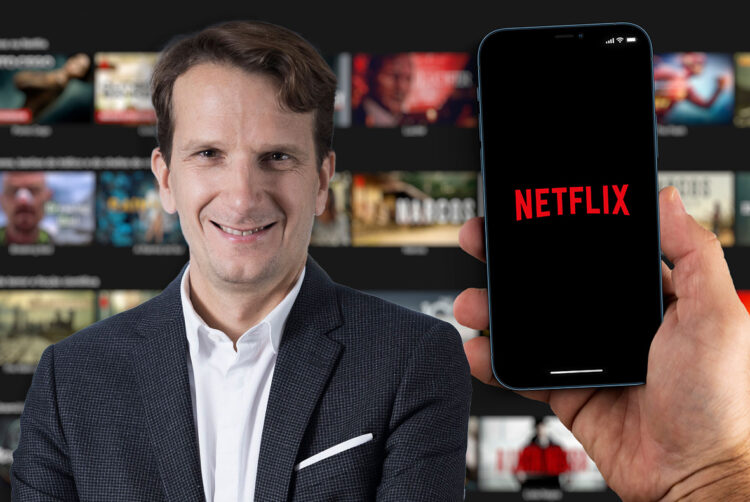‘Making us easy to buy’: Netflix expands programmatic offering in EMEA

Netflix has expanded its programmatic offering in partnership with Google’s Display & Video 360 (DV360) and The Trade Desk to the EMEA market.
The move provides additional buying options to advertisers in the UK, Germany, France, Spain and Italy, and will expand to the Asia-Pacific region in the next few months.
It also includes tie-ups with Google’s Campaign Manager 360 and Innovid for impression verification. At the same time, Netflix is extending its existing DoubleVerify and Integral Ad Science relationships for fraud and viewability verification into programmatic channels for EMEA marketers.
The offering has been available to US marketers since August 2024, after Netflix moved beyond its exclusive partnership with Microsoft’s Xandr.
Under the expanded programmatic offering, advertisers will be able to target audiences based on genre, geography and device, and advertise against Netflix’s top 10 shows in a given region, alongside standard pre-roll and 30-second and 60-second ad breaks within shows and films.
A spokesperson for Netflix hinted that additional features will follow as part of the wider global release later this year.
Expansion marks ‘turning point’
Damien Bernet, Netflix’s EMEA ads vice-president, told The Media Leader that the company is “at the turning point with this programmatic expansion”, echoing language used by co-CEO Greg Peters that Netflix has moved from the “crawl” to the “walk” phase of its advertising development.
The programmatic tools, Bernet said, are focused on “making us easy to buy”.
“It’s the bread and butter of the business, the biggest part of the ads business,” he continued. “We need programmatic to enable us to scale. We’ve heard loud and clear from advertisers for the past two years that they need this capability on programmatic.”
Netflix thinks your binge habits are more important than subscriber count
That said, Netflix is also hard at work to create more “in-depth partnerships” with especially larger advertisers to “give access to our top IPs”, Bernet highlighted.
According to Bernet, the EMEA advertising team now counts over 100 employees and Netflix has taken a localised approach to markets in conversation with advertisers and agencies.
Moreover, EMEA staff have had the benefit of learning from the earlier US programmatic expansion to be able to more efficiently apply new features and train partners in different European markets.
“You wouldn’t be surprised if I tell you that what [The Trade Desk and DV360] need from us in Italy is quite different from what they need from us in the UK, for example,” said Bernet.
‘New advertisers, bigger campaigns’
Netflix’s need to work with third parties was required in part because of the rushed nature in which it moved into advertising in response to declining subscription figures in spring 2022. However, Netflix is now in the process of also rolling out its own first-party adtech stack.
The in-house technology launched in Canada in November and will begin rolling out in the US in April, before launching in EMEA markets “soon”, according to Bernet.
“For two years, we’ve been laying the foundations: the team, the measurement capabilities, the audience, building the scale. And right now, we are really focusing on the client service and making Netflix not [just] an easy-to-buy, but a compelling buy,” he added.
For Bernet, the most exciting part is for Netflix to soon be able to leverage its first-party data as part of its in-house tech stack to innovate on targeting capabilities and personalisation opportunities for advertisers.
Live programming drives growth at Netflix as attention shifts to adtech
He outlined that success for the third-party programmatic expansion will be measured by gauging revenue impact, whereas his short-term goal for Netflix’s in-house adtech stack is to “improve operational efficiency” by reducing complexity in the buying process and driving faster innovation, without the need to work with third parties.
“We want to see new advertisers, bigger campaigns,” Bernet added.
TV and digital both ‘in scope’
While Netflix has not disclosed global ad revenue figures, Peters has previously highlighted the company exceeded its revenue target in Q4, doubling its ad revenue year on year. Netflix expects to double ad revenue again in 2025.
Bernet said Netflix is getting interest from both large brands with an affinity for TV but also newer, digital-driven brands, thanks to its programmatic efforts.
“We bring the positives of TV — the premium environment, the big screen, low ad load, premium content, brand suitability — in combination with what digital can bring,” he explained.
“I don’t want to reduce myself to [just] TV or say we want to do [only] digital. Both of them are going to be in the scope.”
For advertisers of all sizes, audience measurement remains a key focus in order to prove effectiveness of adspend and Bernet agreed that it has been a key concern for Netflix.
To that end, he emphasised how Netflix has prioritised working with TV joint industry currencies in various European markets. In the UK, Netflix joined Barb in 2022 and Bernet said he received “tremendous feedback” from advertisers once it released its first ad tier audience figures to Barb members in September 2024.
According to the latest Barb figures, Netflix’s ad tier now reaches 8.9m consumers in the UK, up from 7.7m in November.
Netflix has similarly joined France’s Médiamétrie and Germany’s AGF, although audience reporting has not yet rolled out.




